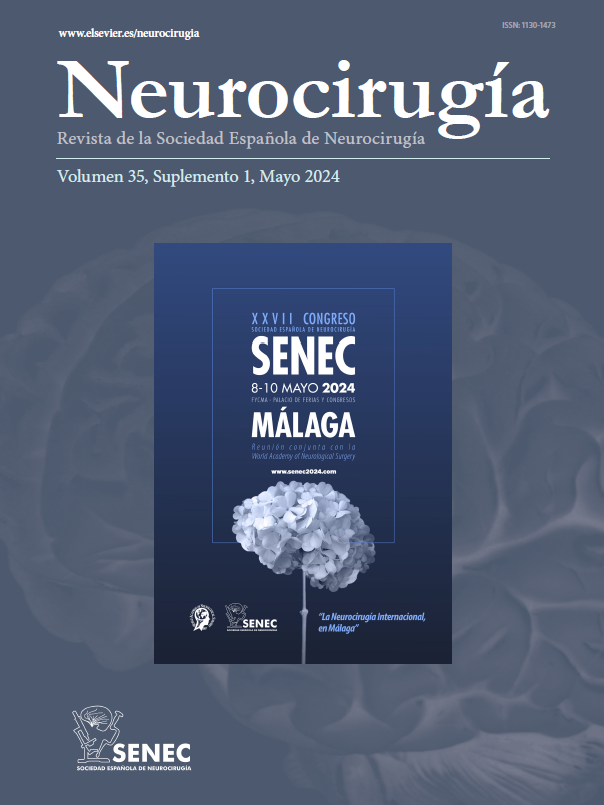Petroclival lesions represent a surgical challenge during the endonasal endoscopic approach, as they may involve maneuvers with severe comorbidity. To avoid the morbidity caused by these maneuvers, a contralateral transmaxillary approach (CTA) has been proposed to complement the endoscopic endonasal approach. The aim of our study is to review the safety and efficacy of this approach.
We included three patients with lesions affecting the petroclival region, one cholesterol granuloma and two macroadenomas, who were surgically treated with a combined ipsilateral transpterygoid approach and a CTA. The latter was performed by wide osteotomy on the anterior wall of the maxillary sinus through a gingivolabial incision.
Complete resection was achieved in the patient with a cholesterol granuloma and subtotal resection in the two patients diagnosed with macroadenoma. One patient presented ecchymosis of the malar area as the only complication.
The contralateral transmaxillary approach may improve exposure and dissection of the petroclival area compared to the homolateral endoscopic endonasal approach allowing reaching the most lateral and posterior region of this territory without the need to manipulate the internal carotid artery.
Las lesiones petroclivales representan un reto quirúrgico durante el abordaje endonasal endoscópico, ya que pueden implicar maniobras con comorbilidad severa. Para evitar la morbilidad que provocan estas maniobras se ha propuesto la realización de un abordaje transmaxilar contralateral (ATC) para complementar el abordaje endoscópico endonasal. El objetivo de nuestro estudio es revisar la seguridad y eficacia de este abordaje.
Se incluyeron tres pacientes con lesiones que afectaban a la región petroclival, un granuloma de colesterol y dos macroadenomas, que fueron tratados quirúrgicamente con un abordaje combinado transpterigoideo ipsilateral y un ATC. Éste último se realizó mediante una osteotomía amplia en la pared anterior del seno maxilar a través de una incisión gingivolabial.
Se consiguió una resección completa en el paciente con un granuloma de colesterol y una resección subtotal en los dos pacientes diagnosticados de macroadenoma. Una paciente presentó equímosis del área malar como única complicación.
El ATC puede mejorar la exposición y disección del área petroclival en comparación con el abordaje endonasal endoscópico homolateral, permitiendo alcanzar la región más lateral y posterior de este territorio sin necesidad de manipular la carótida interna.
Article

If it is the first time you have accessed you can obtain your credentials by contacting Elsevier Spain in suscripciones@elsevier.com or by calling our Customer Service at902 88 87 40 if you are calling from Spain or at +34 932 418 800 (from 9 to 18h., GMT + 1) if you are calling outside of Spain.
If you already have your login data, please click here .
If you have forgotten your password you can you can recover it by clicking here and selecting the option ¿I have forgotten my password¿.








